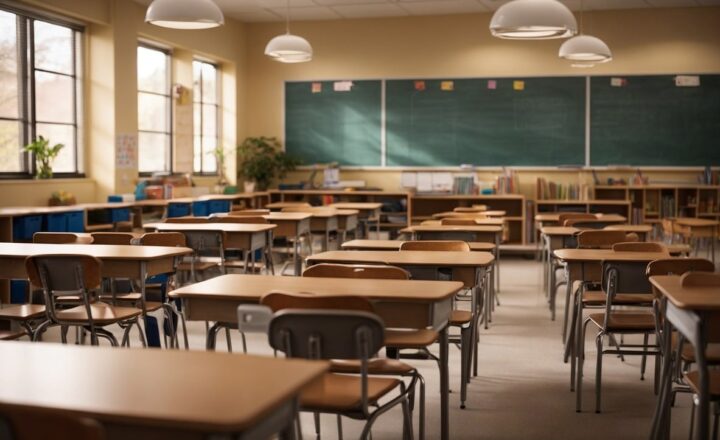Education Systems Around the World: What Can We Learn from Each Other?
November 18, 2024

Education is a crucial pillar of any society, shaping the future generations that will contribute to the economy, culture, and governance of a nation. With globalization, the exchange of ideas in education systems has become more prevalent, prompting the question: What can we learn from different educational practices across the globe?
1. The Importance of Comparing Education Systems
Comparing education systems allows countries to recognize their strengths and weaknesses, fostering a better understanding of successful practices that can be adapted in different contexts. With education ranking as one of the top priorities for governments, examining other systems can offer common solutions to universal challenges, such as student engagement, teacher retention, and equity.
**Key Findings from Global Education Comparisons:**
– **Achievement Gaps:** Many countries struggle with disparities in educational performance between different social and economic groups. Understanding the interventions employed by high-achieving nations can provide insights to address these issues effectively.
– **Educational Policies:** Different policies such as standardized testing, curriculum frameworks, and teacher training programs vary widely. Studying these can inform best practices for policy-making that fosters better academic outcomes.
2. Case Studies of Effective Education Systems
Several countries have distinguished themselves by their unique approaches to education that have yielded noteworthy results.
Finland: Redefining Success through Student Well-Being
Finland’s education system is celebrated for its emphasis on student well-being and individualized learning experiences. The country does not rely heavily on standardized tests, and instead, students engage in a comprehensive curriculum that encourages creativity and critical thinking.
Some notable elements of Finland’s system include:
– **Shorter School Days:** Children spend fewer hours in school, ensuring that they stay engaged and motivated.
– **Less Emphasis on Homework:** The amount of homework assigned is minimal, providing students the opportunity to pursue personal interests.
– **Focus on Equality:** The education system is designed to provide equal access, reducing disparities in educational outcomes among different socioeconomic groups.
Singapore: A Model of High Standards and Accountability
Singapore consistently ranks at the top of global education assessments such as PISA (Programme for International Student Assessment). Key aspects of Singapore’s education system include:
– **Rigorous Curriculum and High Expectations:** Students are challenged with a rigorous curriculum, instilling a strong work ethic and discipline from a young age.
– **Teacher Training and Professional Development:** Singapore invests heavily in teacher training, ensuring that educators are well-equipped to deliver high-quality education.
– **Emphasis on Mathematics and Science:** The curriculum encourages a deep understanding of STEM subjects, fostering robust skills in problem-solving crucial for the future workforce.
3. Learning from Education Innovations
Innovation in education can radically improve teaching methods and student engagement. Several countries are leading with innovative approaches that can inspire others.
Estonia: The Digital Education Frontier
Estonia’s education system is renowned for its integration of technology in the classroom. The country utilizes digital tools not just for administrative tasks, but also as part of the teaching and learning process. Some defining characteristics of Estonia’s system include:
– **Emphasis on Digital Literacy:** Students learn coding and digital skills from an early age, preparing them for the demands of a modern workplace.
– **Flexible Learning Environments:** Classrooms are equipped with modern tech tools, allowing for adaptive learning that caters to varied student needs.
Japan: Balancing Tradition with Modern Pedagogy
Japan’s education system emphasizes both academic excellence and moral education. Schools have a strong focus on discipline, respect, and collective responsibility. Important traits of Japan’s educational framework are:
– **Holistic Development:** Schools prioritize the moral, physical, and social aspects of students, ensuring well-rounded education.
– **Collaborative Learning:** Group activities are widespread, teaching students to work cooperatively and appreciate diverse perspectives.
4. Lessons and Takeaways for Global Education Systems
Through the examination of various global education systems, several universal principles emerge that can enhance learning outcomes irrespective of geographical context:
– **Cultivating a Growth Mindset:** Education systems should promote resilience and adaptability, encouraging students to embrace challenges rather than fear failure.
– **Fostering Inclusive Practices:** Creating equitable learning opportunities for all students can help dissolve barriers to success. This involves addressing the needs of underprivileged and marginalized communities.
– **Integration of Technology:** Embracing technology in teaching methods can prepare students for an increasingly digital world, enhancing their engagement and learning outcomes.
– **Community and Parental Involvement:** Encouraging family and community participation in education fosters better learning environments where students feel supported and connected.
5. Conclusion: Towards a Collaborative Future in Education
As we navigate the complexities of education in the 21st century, the importance of collaborative learning between countries cannot be overstated. Adopting best practices adapted to local contexts can help shape more effective education systems globally.
Education should never be stagnant; rather it should evolve based on shared knowledge and experiences. By learning from the successes and failures of each other, countries can create a more equitable and effective educational landscape for future generations. The benefits of such collaborations will undoubtedly lead to improved educational outcomes worldwide, paving the way for a prosperous global community where knowledge knows no borders.








